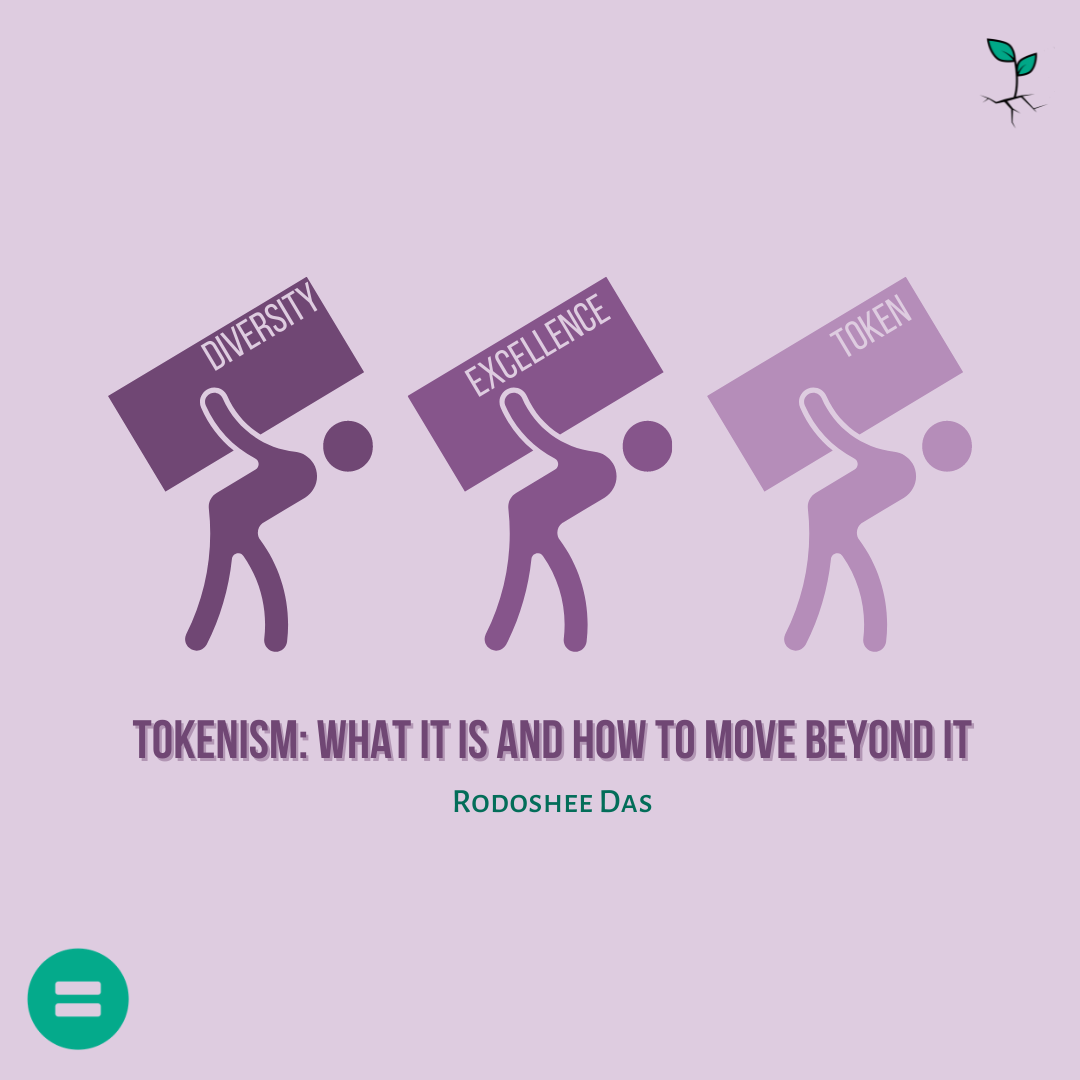Tokenism: what it is and how to move beyond it
Ever wondered why Mike was the orphan who worked at the slaughter farm in IT? Why wasn’t he Bill, Eddie, or Richie who had a modest economic condition? Despite Mike being the most potent character to hold the Losers together, he never achieved an important plot. Neither in the book nor the movies. Even in the sequel, he just remained as the librarian and historian at Derry. Why does this keep on repeating in popular culture? Even when the minority groups are given important roles in the present media since the late 90s, no development has been seen in diversification. This is the same for workplace culture and educational institutions. Have you ever pondered why this representation is more like a facade than an effort to diversify? The answer is most probably Tokenism.
This word was first termed by Alice Walker during the 1980s. But this method existed back from the late 1950s in the USA. It emerged as a solution to racial discrimination as an initial step to mitigate the low representation of people of color. But what was an earnest effort back during those days is not an effective solution for today. This is just prevention, not cure. In the field of psychology, tokenism is termed as a situation of performative racism, a symbolic effort to create diversity. There are two sides to this. A person from a distinct group can be an expert from their community who can add value or a different perspective to the workplace. It also has an added value of cultural diversity to the organization. But on the flip side, this can give a feeling of ostracism to the concerned employee.
There’s an invisible pressure on token employees to outperform in any workplace, which leads to higher expectations on production standards. Given the minuscule group size, the individual identity of the token person is disrespected by the majority, who link a person to a stereotype as a social sway in the organization. Tokenism is racial as well as gender-based when women are hired as tokens in male-dominated workspaces. According to Prof. Moss Kanter from the Harvard Business School, a token employee is from a socially skewed group who belongs to a minority committee that constitutes less than 15% of the total employees in that workplace.
This sort of systematic discrimination also extends to politics. It happens when a party puts forward a candidate from underrepresented groups, based on their sex or race, that is, women or people of color. Sometimes the candidate doesn’t even have a chance of winning the polls. The party’s limited effort to ensure that similar opportunities are given to help them win the nomination. Usually, the candidates are used as paper candidates, while competitive(Swing)seats are given to candidates from the majority group. This approach leads to only an appearance of diversity. No actual steps are taken to stop the overrepresentation of the privileged after the elections. So, no progress is made towards the inclusion of the underrepresented through tokenism. The presidential run and the eventual appointment of the first Asian, woman Vice President Kamala Harris in the U.S. was also seen as a token by many political experts. Criticism was directed towards the poor selection choice as some claimed her to be unfit for the role and just a magnet to attract women and minority voters. On the other hand, some claimed that her identity as a biracial woman was one of the reasons her journey as a presidential nominee came to an end. Though views are mixed, the end product of this discussion was tokenism. The government never commented on whether it was a case of token representation or a pure intention to increase diversity.
This intention of increasing diversity lands up to another question: Is it always distinguishable whether the effort is just a gloss or an honest effort to increase diversity? According to a panel discussion arranged by Vanderbilt University in 2018, tokenism may be just a launchpad to diversity or an HR effort to display diversity. Whatever is the case, an organization should never single out their employees and should rather treat them as equals. This keeps a check on their mental health and confidence in their potential. They must be chosen for their skills, not just for their race or gender. But sometimes the situation is grimmer in real life. The biggest example of this is how media, arts, and entertainment handle this issue.
As discussed in the foremost part of this piece, there are many examples like IT which shows how Hollywood amplified tokenism in an undesirable way. There was a controversy regarding Star Wars casting choices from the 1980s until today. Whether it’s Lando Calrissian (portrayed by Billy Dee Williams), Mace Windu (portrayed by Samuel L. Jackson), or Finn ( portrayed by John Boyega), the tokenization of Black male leads came under fire. They were all given important character arcs, promoted and marketed, just to end their story abruptly. Greyworm and Melissandre from Game of Thrones, Lane Kim from Gilmore girls, Drederick Tatum from The Simpsons, as token characters in the television and film industry, are all too common.
As far as the media is concerned, we witnessed how Meghan Marle’s controversial leave from the British Royal Family was portrayed by the media. Even before things started to get rough, the relationship between her and Prince Harry was always met with harsh racist commentaries. But the factors which led to such events were evident during the interview they had with Oprah Winfrey in the last month. She was subject to performance pressure and that she was a representation of the modernization of the royal family. She was promised equal treatment, only to be proved as a token later on.
Tokenism is everywhere. In the USA, it’s more about color. It is the biracial community that gets a label of token or a bare minimum representation. This leads to ignorance for the Black community. The discrimination manifests differently in other countries, sometimes in the form of caste and gender. The only solution to remove tokenism is the effort made to transform it to diversity. Some of the companies across the globe are moving mountains to go beyond tokenism. Companies like Mariott International, Johnson & Johnson, Sodexo are making an exception. To know more about how they are creating such diversity and inclusion, check out DiversityInc’s analysis and the list of companies who made it to the hall of fame throughout the last decade for their effort towards diversity.
Don’t hire a person of color just because you want to gain your consumer base of that community. As Prince Harry in the Winfrey interview rightfully claimed, “It was not about her, it was what she represented”. Hire the talent, accept the individual, not their race!
Cover art designed by GroundBreakers Communications Lead Urooj Ali.
Sources:
- “What Is Tokenism, and Why Does It Matter in the Workplace?” Accessed May 8, 2021. https://business.vanderbilt.edu/news/2018/02/26/tokenism-in-the-workplace/.
- “It (2017 Film) – Wikipedia.” Accessed May 8, 2021. https://en.wikipedia.org/wiki/It_(2017_film).
- Kanter, Rosabeth Moss. “Some Effects of Proportions on Group Life: Skewed Sex Ratios and Responses to Token Women.” American Journal of Sociology 82, no. 5 (1977): 965–90.https://www.jstor.org/stable/2777808
- “Meghan Markle and the Problem of Tokenism – YouTube.” Accessed May 8, 2021. https://www.youtube.com/watch?v=T7JH15wGwwM&feature=youtu.be.
- “Paper Candidate.” In Wikipedia, April 20, 2021. https://en.wikipedia.org/w/index.php?title=Paper_candidate&oldid=1018903409.
- “Swing (Politics).” In Wikipedia, March 1, 2021. https://en.wikipedia.org/w/index.php?title=Swing_(politics)&oldid=1009668433.
- DiversityInc. “Diversity Management News and Updates.” Accessed May 11, 2021. https://www.diversityinc.com/.


